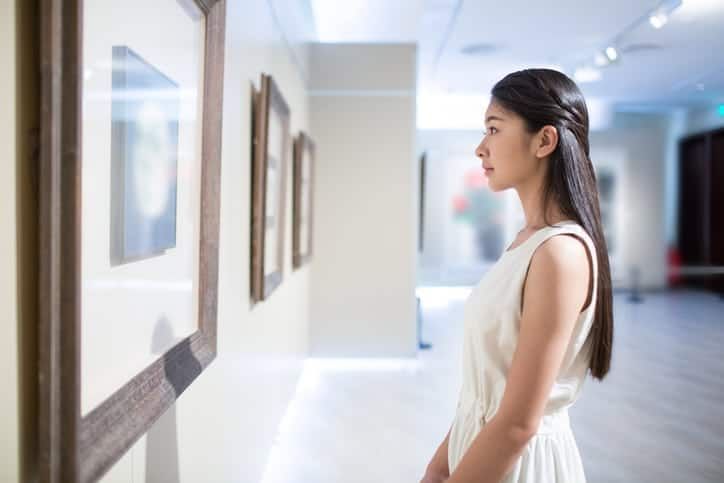
This September the Saatchi Gallery launched its annual START art fair. The event serves as a showcase for emerging artists around the world. Among them this year were a number of exciting Asian artists: contemporary Indian artist Owais Husain, Chinese performance artist Liu Bolin and Vietnamese painter Nguyen Van Du.
This is part of a growing trend which has seen Asian art explode in the UK over recent years. The work of Asian artists has sold for huge amounts at auction, and has been displayed in wildly popular shows around the country. As works sell for record sums and the public floods to Asian exhibitions in record numbers, what is behind this new fascination?
Asian art is now big business
Asian art has been gaining value all over the world in recent years. In 2011, Sotheby’s Hong Kong sold a record US$447 million of Asian artwork, wine, jewelry and watches in an eight-day auction.
According to figures published in India Today, Indian art is now worth $250 million. Many of India’s most expensive works are sold in Sotheby’s, London. Despite the point of sale, much of this art will have been bought by Indian buyers; the amount spent by these buyers has risen by 54% in the last five years.
Auction houses in the UK have recognised the “importance of the Asian buyer,” as the Head of Impressionist and Modern Art at Christie’s put it earlier this year. Sotheby’s and Christie’s both pushed back their sales by a month to avoid clashing with the lunar new year and thus maximise Asian investment. The move appeared to pay off, with both institutions bringing in record figures.
Much of the art sold to these Asian buyers was created by European or American artists. But Asian art has also raised huge figures at recent auctions. As recently as October, a 16th-Century Ramayana illustration sold at Sotheby’s for £156,250, over five times its estimated value. A sale entitled Modern Contemporary South Asian Art racked up £3.1 million with one Manjit Bawa painting selling for almost half a million. In March this year, Tyeb Mehta’s Untitled (Woman on Rickshaw) sold for £2.74 million at Christie’s, London.
These huge sales figures are being driven in part by the popularity of Asian art in museums. In October a Bhupen Khakhar painting sold for £1.1 million in London. The price, a record for Khakhar, was attributed to the artist’s Tate Modern retrospective. Sotheby’s Head of Indian and Southeast Asian Art said Khakhar’s paintings “are now being sought after by major museums and his reputation will only continue to grow in stature.”
Asian art is what the public want
It’s not just wealthy buyers who are showing an appreciation for Asian art. The Saatchi Gallery’s Thailand Eye exhibition was the 14th most popular art show in the entire world in 2016.
In 2015, Ai Weiwei’s exhibition at London’s Royal Academy attracted over 4,300 visitors per day. And as recently as 2017, the Tate Modern held the aforementioned major retrospective for Indian painter Bhupen Khakhar.
It’s no coincidence that so many of the UK’s leading galleries are holding exhibitions by Asian artists. It comes at a time when many institutions are committing themselves to representing art in its full diversity.
It’s arguable as to whether it has achieved this in practice, but since its foundation the National Portrait Gallery has been publicly committed to representing society as a whole. The gallery continually reevaluates its success, and has recently pledged to include “a rich mix of activity which explores cultural identity and reflects the rich cultural diversity of Britain.”
The British Museum has had a similar aim since 2009. The institution drew controversy earlier this year for suggesting Asian names may be difficult for younger visitors to understand (even though many of the museum’s young visitors are in fact Asian or of Asian descent). Despite this, the museum has hosted a range of hugely popular exhibitions dedicated to Asian artists, including a recent retrospective for Japanese master Katsushika Hokusai.
The Tate Britain funded field investigations in an effort to define ‘Britishness’ as a concept. The research concluded that Britain should be viewed as ‘transcultural’ rather than ‘multicultural’, and this view has informed their curation ever since.
It’s clear that through efforts like these, the UK’s galleries are catching up with the public’s desire to see artwork that reflects the diverse cultural fabric of the UK. From this perspective, it is inevitable that Asian art is going to see a boost.